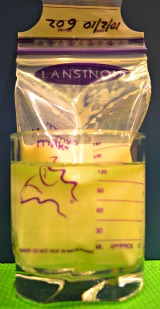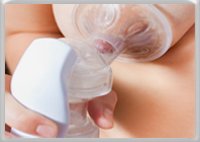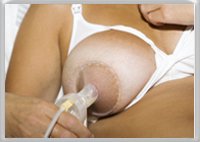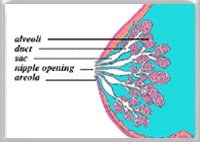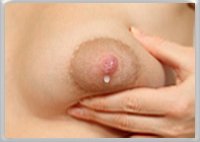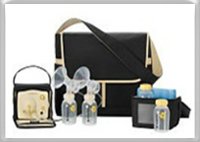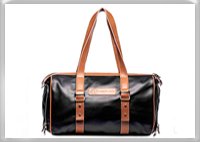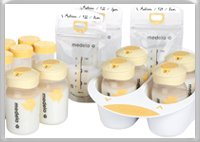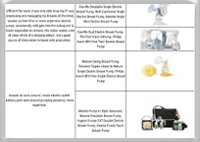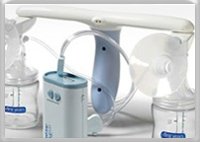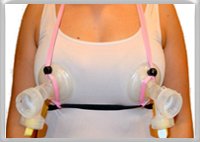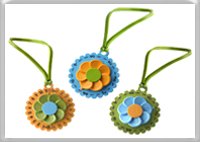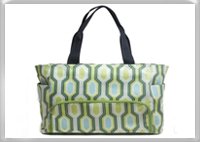Defrosting Breast Milk Basics
How Much Milk Do I Need?
How Much Milk Do I Need?
Before defrosting breast milk, you need to know how much milk your baby will need. An exclusively breastfed baby is difficult to measure in terms of his/her milk consumption.
If you tested your milk supply earlier with one of the tests offered here, you probably know approximately how much your baby needs. But if you don’t feed your baby your pumped or hand expressed milk often, there is no way to know for sure, so you will need to guess this first time.
My rule of thumb is
Thaw a little more than what you think your baby needs (keep in mind growth spurts). But pour in the bottle just what you think he/she will eat. Have the remaining portion of the milk handy, if your baby asks for more.
If not needed you can always refrigerate the untouched milk and use it for the next feeding.
Otherwise, if you pour it all into the bottle, but your baby doesn't finish it, you will have to discard what's left in the bottle.
To prevent nipple confusion use alternative methods of feeding breast milk to your baby other than a bottle, especially for occasional feedings. Visit Nipple Confusion section to read more.
If you stored and froze breast milk correctly, your thawed milk will be just as good as fresh.
To defrost breast milk, let warm water run onto the container or place the container in warm water. Rotate the container often to warm milk evenly.
DO NOT:
- defrost milk by keeping it at room temperature for a long time.
- use hot water to thaw milk or boil it. Exposing milk to high temperatures destroys vitamins and nutrients.
- microwave bottles and storage bags.
Important: Microwaving heats the milk unevenly and can cause scalding.
In addition, microwaving breast milk destroys many of its immunological properties and some vitamins.
Besides, microwaving plastic melts it and releases chemicals (like BPA) into the milk. BPA (bisphenol-A) consumption may lead to many potentially serious health conditions, including cancer.
The best and the safest way of defrosting breast milk is by moving it from the freezer into the fridge for the night and then warming it up in warm water right before giving to the baby.
If after thawing milk looks layered, slightly shake the container to return milk to its regular consistency. Separated milk is safe for the baby.
Use thawed milk within 24 hours.
If your baby doesn’t finish all the milk from the bottle at one feeding, do not re-freeze it. It is best to discard any milk remaining in the bottle. With time you will learn to predict the appetite of your little one and the waste will be minimal.
Milk that was thawed, but not touched, can remain in the fridge till the next feeding, provided it didn’t sit for hours at a room temperature.
A Note on Lipase
Lipase is an enzyme that helps break down fats in human milk, so that the baby could easily digest them. It is activated when milk cools down or is thawed after being frozen.
This broken-down fat is what gives milk a peculiar soapy taste and smell. Milk doesn’t lose its nutritional value, and is not spoiled. It can be safely fed to a baby. Most babies don’t even notice change in taste and smell.
If your baby does mind the new taste (like mine did), try mixing it up with some fresh milk. Vary the proportions and gradually decrease the amount of fresh milk. Your baby may get used to the taste. I know how it sounds, but it is still that same best food for the baby. And again most babies don’t even notice the new taste and smell.
Try This Trick: If your baby refuses the thawed milk, and the milk smells or tastes soapy, going forward try warming up milk before freezing. Do not boil it though. Remove it from the heat just before it boils and cool it down.
Then freeze it. Doing this will deactivate lipase and prevent soapy taste. Visit Breast Milk Storage section to read more about freezing and storing breast milk.
Defrosting breast milk is an easy and safe task if you froze the milk correctly in the first place.
Home › Breast Pumping › Defrosting Breast Milk
